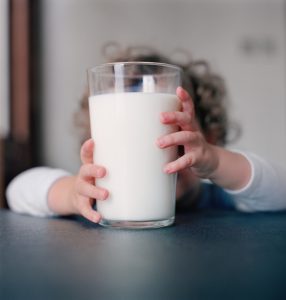India’s milk production has increased from 22 million tonne in 1970 to 156 million tonne in 2015-16, which shows a growth of 700 percent during last 46 years
Arun Pandey
In a recently held Inter – Session meeting of Consultative Committee on Agriculture, Union Minister of Agriculture and Farmers Welfare, Shri Radha Mohan Singh said that milk production has become a major economic activity amongst rural households and farmers are adopting dairying along with farming for augmenting their incomes.
According to government about 70 million rural households are contributing to milk production. Today, the small & marginal farmers and landless farm labourers produce about one to three litres of milk per day and account for most of the milk produced in the country. About 78 percent farmers in India are small and marginal who own about 75 percent of female bovine but they own only 40 percent farm land. One third of the gross income of rural households comes from milk but milk contributes to half the gross income of landless farm labourers. Women participation in dairying is about 70 per cent.
India continues to be the topmost milk producing nations of the world since 1998. It also has the largest bovine population in the world, 18.4 percent of the world’s bovine population. India’s milk production has increased from 22 million tonne in 1970 to 156 million tonne in 2015-16, which shows a growth of 700 percent during last 46 years. As a result, the per capita availability of milk in India is 337 gram/day today stands healthy and above the world’s per capita availability of 229 gram/day.
In the last two years 2014-16, milk production has registered a growth rate of 6.28 percent which is more than last year’s growth rate of about 4 percent and three times higher than the world growth average of 2.2 percent. In Gross Value Addition (GVA) of Rs.4.92 crore in 2014-15, the contribution of milk is more than 37 percent. Over 50 percent of milk produced in the country is surplus, out of which about 38 percent is distributed by the organized sector that is equally shared by cooperatives and private dairy organisations.
In order to encourage farmers for increasing milk production, milk collection facilities need to be upgraded and farmers be given remunerative price for their produce. This is possible only when an effective management system is in place to link the farmers to the market. Government will encourage BPL households, small and marginal farmers to rear indigenous breeds.
National Bovine Breeding and Dairy Development Programme (NPBBDD), started in 2014-15 focuses on developing comprehensive and scientific programme to meet the increasing demand for milk. The programme includes – National Bovine Breeding programme (NPBB) and National Dairy Development Programme (NPDD). The NPBB focuses on artificial insemination network and monitoring of programmes for indigenous breed development and conservation in the breeding areas. The NPDD is focusing on creations and strengthening of infrastructure for milk unions, federations for production, procurement, processing & marketing of milk and training of dairy farmers and extension.
History of Dairy Farming
 Cows have been used to produce milk for consumption for thousands of years. Modern dairy farming began in the early 1900’s after pasteurization was developed and used. Pasteurization allowed for a safer product and also extended milk’s shelf life by eradicating spoilage causing bacteria. This allowed for milk to last longer and be shipped further. With increase in availability of milk there was also an increase in demand and the need arose for larger farms. These larger farms rely on healthy cows and efficient practices to produce larger amounts of milk and dairy products. While these farms have grown and become more efficient, farmers still stay involved in reducing environmental impacts, producing safe products and keeping their herds healthy and happy.
Cows have been used to produce milk for consumption for thousands of years. Modern dairy farming began in the early 1900’s after pasteurization was developed and used. Pasteurization allowed for a safer product and also extended milk’s shelf life by eradicating spoilage causing bacteria. This allowed for milk to last longer and be shipped further. With increase in availability of milk there was also an increase in demand and the need arose for larger farms. These larger farms rely on healthy cows and efficient practices to produce larger amounts of milk and dairy products. While these farms have grown and become more efficient, farmers still stay involved in reducing environmental impacts, producing safe products and keeping their herds healthy and happy.
———————————————————————————————————————-




